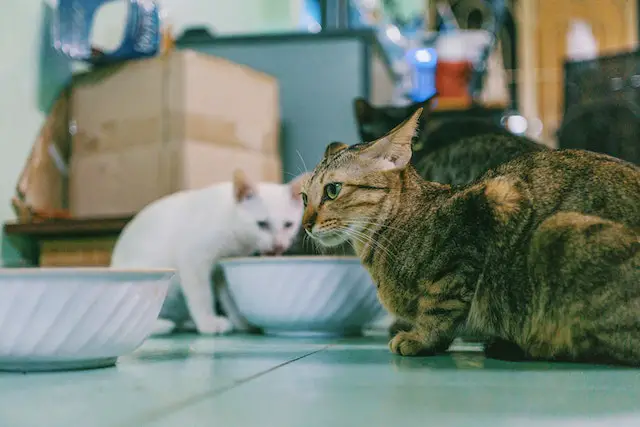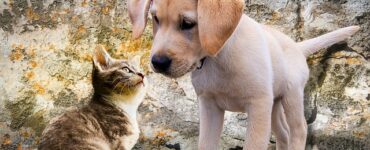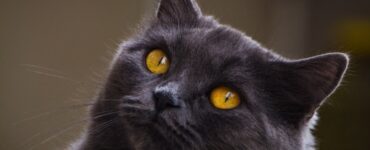Proper cat nutrition is a concern for many cat owners. Providing your cat with the cat food that has the best ingredients and the proper nutrients will help him live a healthier, longer life.
However, with so many choices on the shelves of pet stores, a cat owner can easily become confused. From commercial cat food to all-natural cat food to raw cat food, how do you know which is best for your feline friend?
Commercial Cat Food
Experts agree that most commercial companies strive to provide good-tasting products with an adequate nutritional balance. However, many also believe that premium products more consistently provide your cat with higher quality ingredients.
In addition, premium foods typically include higher amounts of fats and proteins without the by-products often found in lower quality foods.
Choices in Cat Food
In today’s market, you’ll find an endless supply of brands and flavors in cat food. In the commercial market, three basic varieties exist:
- Dry food: Dry cat food is the best for reducing dental issues and is a common choice for free feeding. High-quality dry foods tend to contain the proper nutrients for cats.
- Semi-Moist food: Semi-moist food is often seen in the form of treats. This type of cat food may be high in calories and may contain little nutritional value.
- Wet food: Canned foods hold the greatest appeal for many cats, but, due to higher water content, they may not be as nutritionally dense as dry kibble. In addition, cans of wet food can spoil easily.
- Within the above-listed types of cat food, you will find:
- age-appropriate blends (including cat food designed for kittens or those geared towards elderly cats)
- all-natural/organic cat food
- raw cat food (including those containing meat and fish with or without bones)
- vegetarian cat food.
Among these selections, you’ll also discover cat foods designed for specific health issues and pregnancy.
In general, providing a variety of the best dry and wet cat foods will go a long way toward keeping your cat healthy and happy. This blending will help prevent your cat from becoming a finicky eater. Of course, it’s always wise to speak with your vet about the best nutritional path for your particular pet.
Cat Treats and Cat Nutrition
Cat treats provide a great way for you to bond with and train your cat. While they may not be as healthy as regular food, they serve an important purpose. However, avoid going overboard with treats and look for ones that are high in nutrients to keep your cat at a health weight.
Feline Nutritional Needs
All cats require specific ingredients in their diet to create a healthy balance. However, a cat’s nutritional requirements will change as the cat ages. For instance, kittens typically require more amino acids while seniors might need increased fiber. Talk to your vet about what your cat’s diet should include.
In general, cats need the following:
- Carbohydrates: Carbohydrates are a dietary necessity that provide the body with energy. They include corn, rice, wheat and other plant derivatives. Be aware, however, that carbohydrates can also cause insulin to spike.
- Fats: Fats derived from animals, including meat and poultry, as well as from soybeans and fish, should be included in your cat’s diet.
- Minerals: You cat’s diet should include such minerals as calcium and phosphorus.
- Proteins: Proteins help your cat’s body perform some very important functions, including breaking down amino acids. Meat, poultry and fish are sources of protein.
- Vitamins: Your cat’s diet should include vitamins A, B-Complex, C, D, E and K.
Common Foods to Avoid
Some common foods have the potential to negatively impact your cat’s health. Avoid feeding your cat the following:
- Certain types of fish, including catfish, in a raw state act to destroy Thiamin (vitamin B1).
- Liver in raw form and in large quantities can lead to toxic Vitamin A overload.
- Milk can cause upset stomach in many cats, as many adult cats develop lactose intolerance.
- Tuna, when canned, contains mercury as well as minerals that can cause Vitamin E deficiencies.
The following foods can also cause harm to your cat:
- Chocolate and coffee contain the toxic ingredient theobromine. Carob is a chocolate-tasting ingredient often used in gourmet pet treats and is safe for cats.
- Onion in any form can destroy red blood cells. Note that some baby food products include onion salt.
- Processed meats may contain preservatives that are harmful to your cat’s digestive system.
- If you are unsure of whether a certain food is safe for your cat, contact your vet.
Raw and All-Natural Cat Food
Raw diets are rising in popularity but are often too time-consuming for most cat owners. In addition, it is difficult for people to include the right balance of nutritional ingredients in a raw diet. Often, too many fats become a part of the diet, which can lead to serious problems with the pancreas. Plus, there is also the added danger of introducing bacteria or parasites with raw meals.
Smaller commercial outlets often carry raw and all-natural foods. Study the ingredients before you make any purchase of raw food and check with your vet to be sure your cat is getting all the nutrients he needs. In general, it’s better to trust commercial products that have undergone extensive testing.
On occasion, a rodent or lizard may find its way into your cat’s possession. This is natural prey behavior, but there is the potential for parasite infestation or poisoning. If you know your cat has consumed an “unauthorized” meal, it’s best to monitor activity for a few days. In spite of the fact that cats are natural hunters, their digestive systems are often very delicate.

Hi, I’m Jodie! I’m a spain-Moroccan writer with a passion for imagination, adventures, magic and stories with heart.
Please don’t hesitate to contact me for any questions, suggestions, comments or feedback.

















Add comment